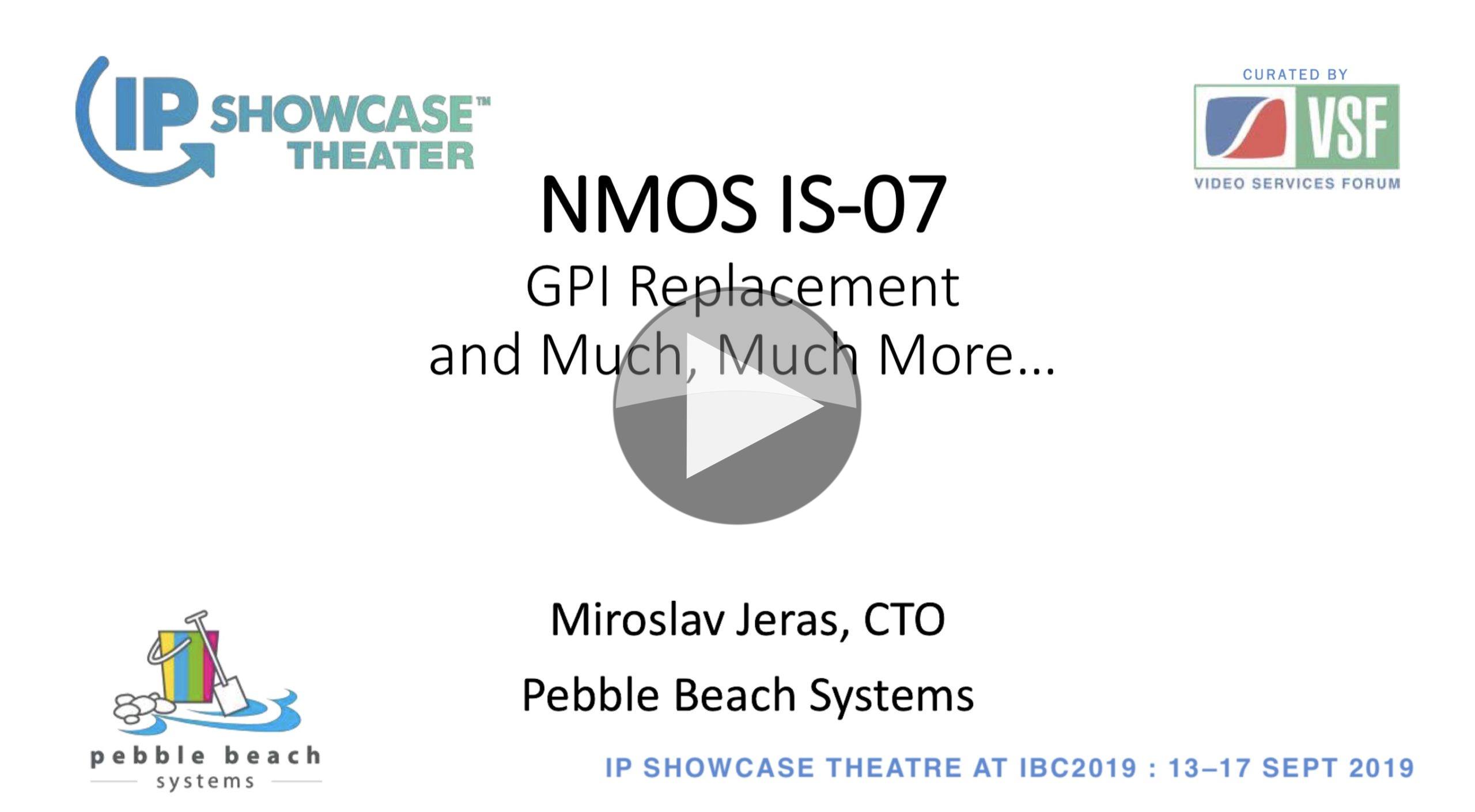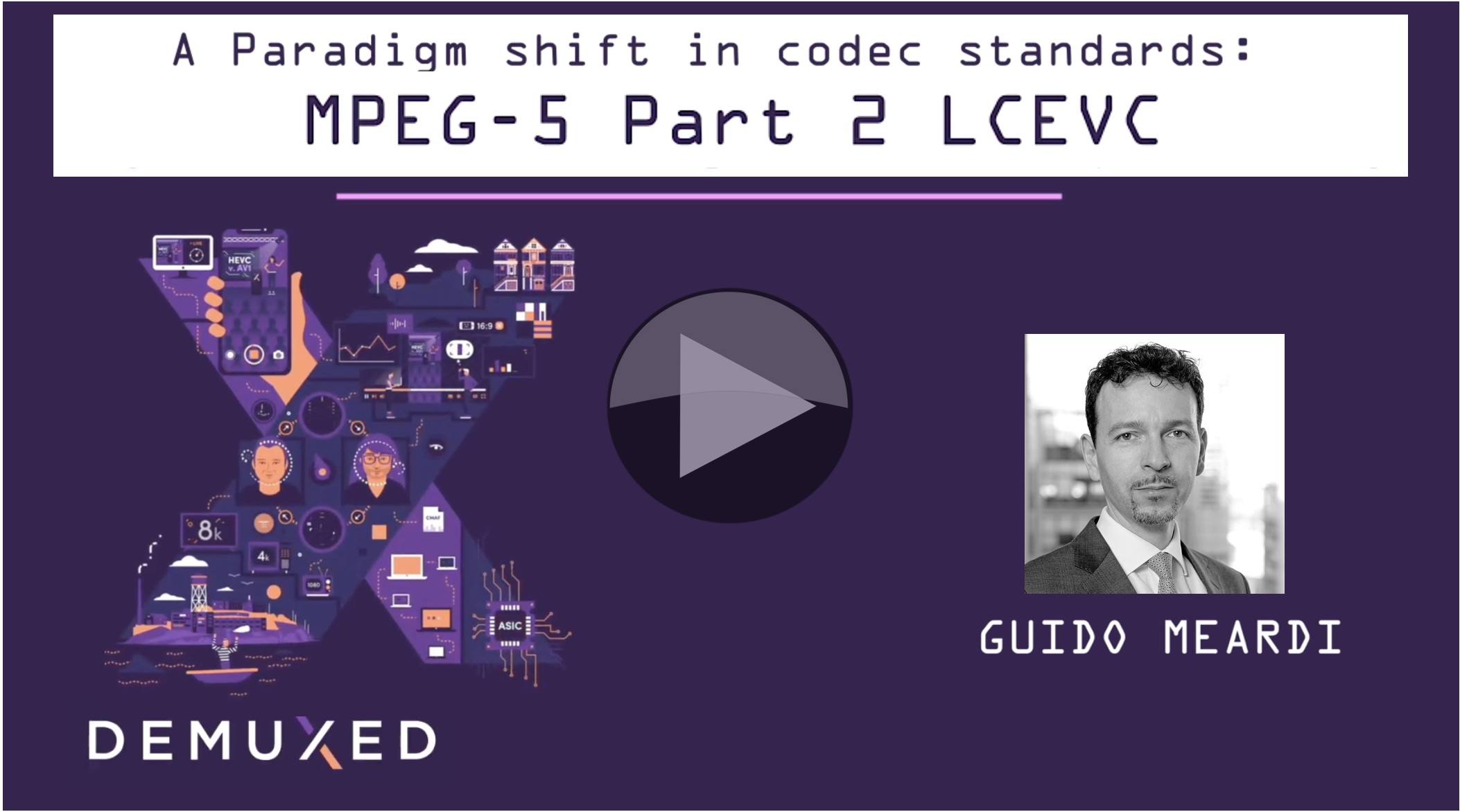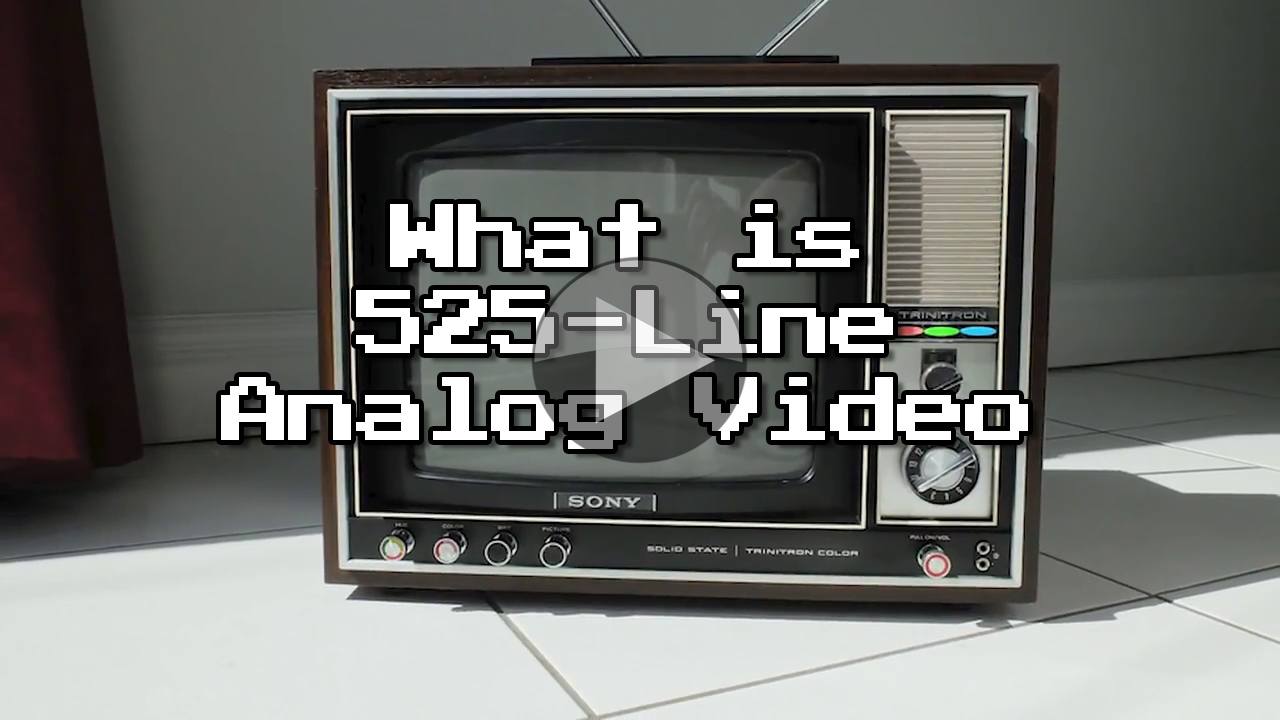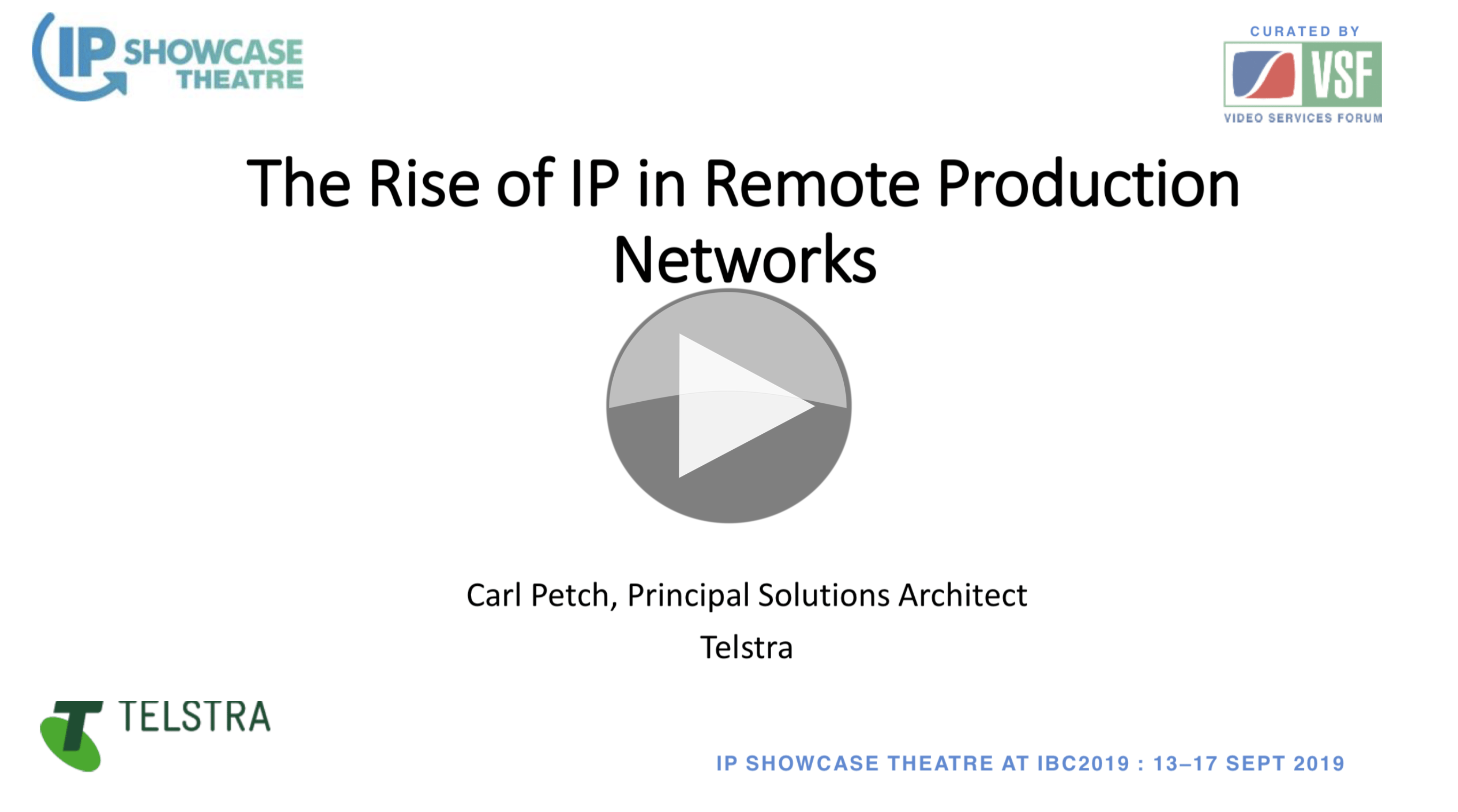GPI was not without its complexities, but the simplicity of its function in terms of putting a short or a voltage on a wire, is unmatched by any other system we use in broadcasting. So the question here is, how do we do ‘GPI’ with IP given all the complexity, and perceived delay, in networked communication. CTO of Pebble Beach, Miroslav Jeras, is here to explain.
The key to understanding the power of the new specification for GPI from NMOS called IS-07 is to realise that it’s not trying to emulate DC electronics. Rather, by adding the timing information available from the PTP clock, the GPI trigger can now become extremely accurate – down to the audio sample – meaning you can now use GPI to indicate much more detailed situations. On top of that, the GPI messages can contain a number of different data types, which expands the ability of these GPI messages and also helps interoperability between systems.
Miroslav explains the ways in which these messages are passed over the network and how IS-07 interacts with the other specifications such as IS-05 and BCP-002-01. He explains how IS-07 was used in the Techno Project – tpc, Zurich and then takes us through a range of different examples of how IS-07 can be used including synchronisation of the GUI and monitoring as well as routing based on GPI.
Watch now! | Download the slides
Speakers
 |
Miroslav Jeras CTO, Pebble Beach Systems |








